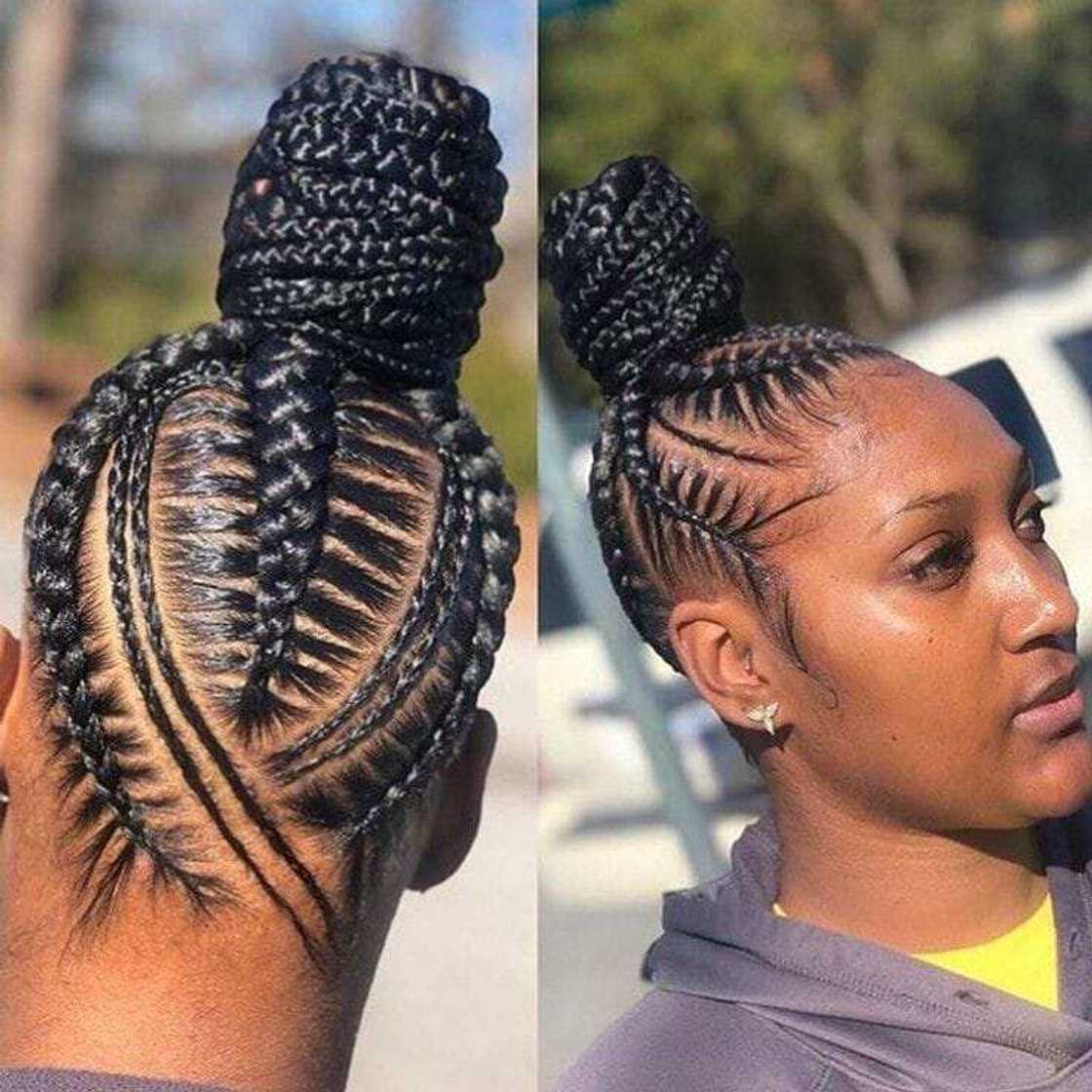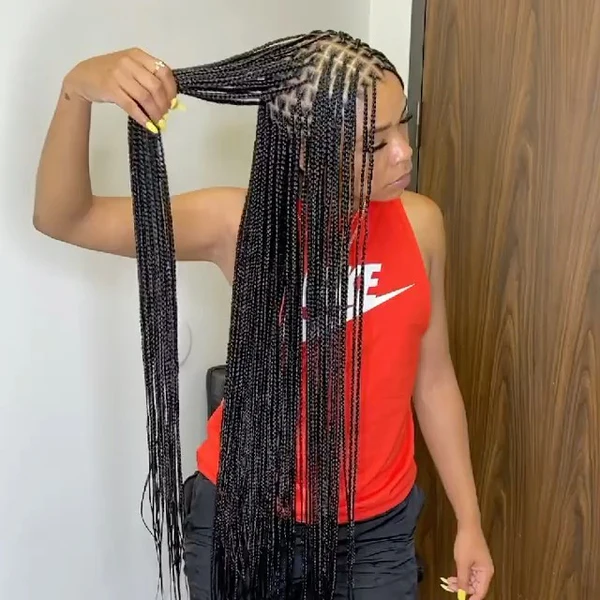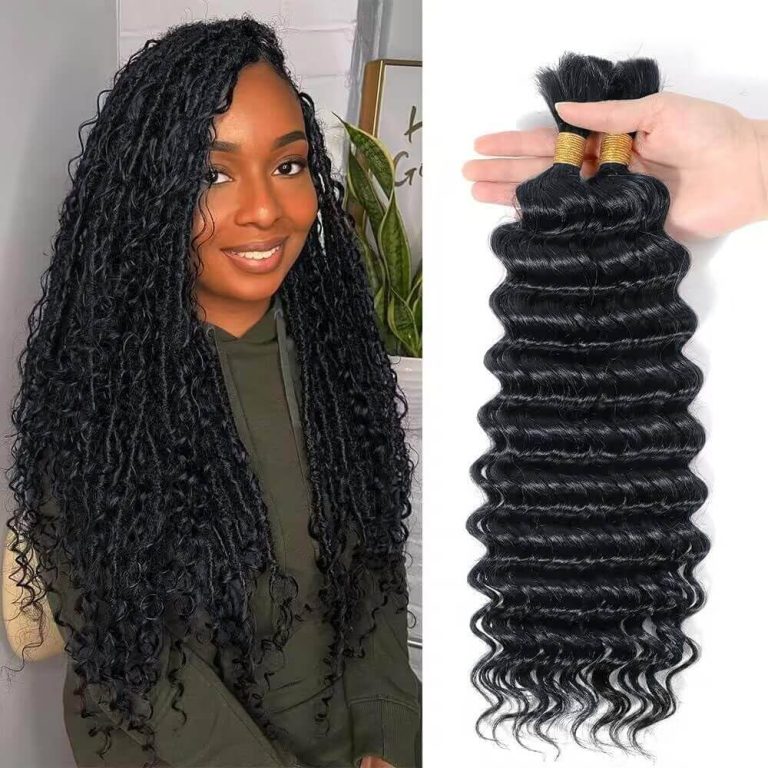
Stitch Braids: Revolutionizing Protective Hairstyles
The Evolution and Origin of Stitch Braids
Stitch braids have not just sprung up; they have evolved from a well-known hairstyle. Initially, stitch braids evolved from traditional cornrows, a style worn by Africans since ancient times.
The transformation from traditional cornrows
At their core, stitch braids are a modern twist on the classic cornrow style. Traditional cornrows are braided close to the scalp using a continuous, raised row technique. Stitch braids take this method a step further. They use a precise technique that creates a ‘stitched’ look by neatly parting the hair into sections using either fingernails or a fine-tooth comb. This creates sleek, straight lines that look like stitches, hence the name.
Historical significance and modern adaptation
The history of stitch braids begins with cornrows that date back to 3000BC in Africa. These braids were not just about style; they often signified the wearer’s tribe, social status, and more. Fast forward to today, and the technique has been adapted to suit modern aesthetics while still holding its place as part of a rich cultural heritage. Stitch braids offer a way to carry forward traditional hairstyling into today’s fashion, honoring their roots while embracing new trends.
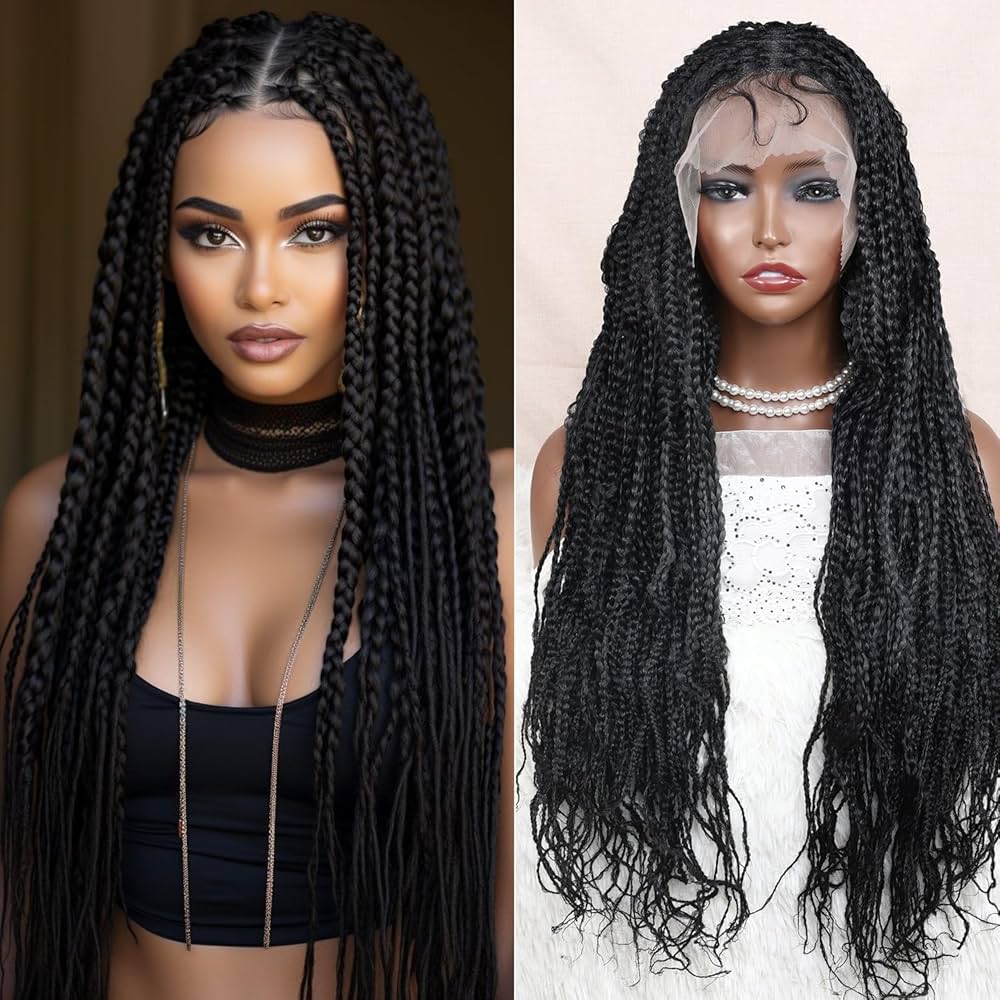
Defining Stitch Braids
Stitch braids stand out as a distinct hairstyle with a crafted appearance.
Understanding the technique
This braiding technique begins with neat, parallel lines along the scalp. The braider then parts the hair using a fine-tooth comb or fingernails. Small sections of hair create the ‘stitch’ effect between larger braids. The technique results in a refined look with clean lines akin to stitches.
Characteristics that distinguish them from regular braids
Stitch braids differ from regular braids in their precision and style. Unlike traditional cornrows, stitch braids feature distinct line separations, resulting in a patterned design. A finer parting method distinguishes these braids, giving a more intricate and polished final appearance. They offer a tighter, more structured look with added texture and dimension.
How to Create Stitch Braids
Creating stitch braids involves meticulous technique and patience. The process can vary, but here are guides for both a traditional and a band-less braid technique.
Step-by-step guide for traditional technique
To craft stitch braids using the traditional method, follow these simple steps:
- Start by applying a holding pomade to each section of hair, including the roots. This ensures a smooth, neat style.
- Use hair-friendly bands to section off the hair at the roots, like tiny ponytails.
- Begin braiding the larger sections and incorporate synthetic extensions if desired for added volume.
- For the thin lines set aside, braid them directly into regular cornrows without bands or extensions.
- Continue this process across the head, deciding whether to include thin rows between the larger braided sections.
- Finish off by decorating your braids with beads or other accessories if you wish.
Exploring the band-less braid technique
The band-less braid technique requires skill but offers a sleek, band-free finish:
- Ensure the hair is completely detangled and apply pomade for grip and shine.
- Start by braiding the hair about four times before beginning your first ‘stitch’.
- Use your pinky finger to part the hair into neat sections as you continue to braid.
- Only add extensions after a few stitches have been made, ensuring they are snug against the scalp.
- Hold the extension between your thumb and index finger and merge it with the middle braid section, continuing the stitch braid process.
- Maintain even tension throughout to keep the braids uniform and neat.
The keys to mastering stitch braid techniques are precision and practice. Whether you opt for the traditional or band-less approach, both will leave you with a protective style that’s as durable as it is stunning.
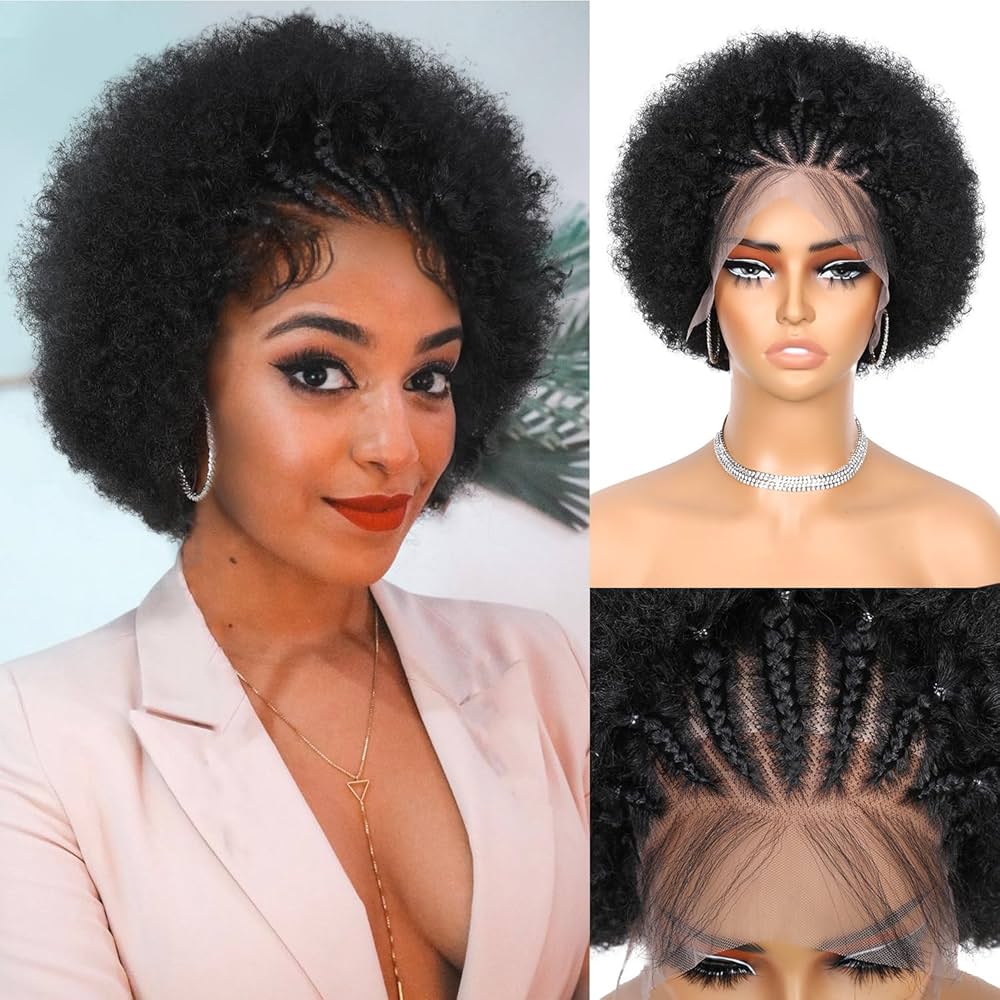
Styling and Versatility of Stitch Braids
Stitch braids shine in their adaptability and diverse styling possibilities. They are more than just traditional cornrows.
Various ways to wear stitch braids
You can style stitch braids in many ways. Go for a ponytail, updo, or a straight-back look. Consider side-swept braids or bun styles for a chic touch. The half-up-half-down look and the double bun are also popular choices. Personalize your look by mixing thin and thick braided rows. These styles keep you trendy, anytime.
Creative designs and styling options
With stitch braids, creativity has no limits. Introduce zigzag patterns or heart shapes for flair. Arrow and geometric designs stand out too. Your stylist might create a new, unique pattern just for you. Beads or cuffs can add a playful or elegant twist to your braids. Whatever your choice, stitch braids cater to your style with ease.
Maintenance and Longevity
Proper care ensures your stitch braid stay fresh and last longer.
How long stitch braids can last
Stitch braid, known for their durability, typically last between one to two months. Their longevity depends on hair growth rate and maintenance routine. As new hair grows, the braids might loosen, diminishing their neat appearance.
Tips for preserving the style
To keep your stitch braid looking their best, follow these care tips:
- Wear a silk or satin scarf or bonnet while sleeping. This prevents frizz and keeps braids intact.
- Keep your scalp and braids moisturized. Use a light spray or oil to avoid build-up.
- Avoid excessive water exposure. Tie your braids up or wear a shower cap during showers.
- Limit heavy products and frequent washing. These can cause slippage and frizz.
- Schedule touch-ups if wearing braids for more than a month. A professional stylist can tighten growth areas, preserving the style’s fresh look.
Best Hair Types for Stitch Braid
Stitch braid is versatile, but they work best with certain hair textures.
Identifying suitable hair textures
The ideal hair types for stitch braid span from 3A to 4C. These textures have the right amount of curl and thickness. They hold the braids well without slippage. Finer hair can also be braided, but it may need more care and tighter braiding to stay put. Coarse and thick hair types offer a sturdy base for the braid. They also allow for a fuller, more voluminous look.
Considerations for sensitive scalps
Sensitive scalps need extra attention when getting stitch braids. The tightness required for stitch braids can be tough on the scalp. If you have a delicate scalp, inform your stylist. They can adjust their technique. Gentle handling and less tension will prevent discomfort. It’s also important to keep your scalp hydrated with oils or serums. This helps to soothe the skin and reduce itchiness or irritation.
Advantages of Choosing Stitch Braid
Choosing stitch braid isn’t just a fashion statement—it’s a smart choice for hair health and versatility. These braids bring multiple benefits with them.
The benefits of stitch braid as a protective style
Stitch braid stand out in the realm of protective hairstyles. Their main advantage is that they shield your natural hair from daily wear and tear. This means less breakage and healthier hair growth. By tucking your natural hair away, you also reduce the need for constant styling, which can weaken hair over time. Another plus is their longevity, with stitch braid lasting up to two months with proper care.
The convenience factor is huge too. Unlike some other styles, stitch braids require minimal daily maintenance. This saves you time and reduces hair manipulation. You’re left with a style that stays neat over time, all while your natural hair is safely growing underneath.
The unique appeal and lightweight nature
Stitch braids also have a distinctive look that sets them apart from regular braids. Thanks to the method used, they create a pattern that mimics actual stitches, giving a look that catches the eye. They’re not just about looks, though; stitch braids are usually lightweight, which means they’re comfortable to wear for extended periods. They put less strain on your scalp, reducing the risk of headaches and hair loss due to tension.
And for those with an active lifestyle or lower pain threshold, stitch braids can be a godsend. Done correctly by a professional, these braids are pain-free while still giving off a crisp, neat appearance. Their unique combination of style, protection, and comfort makes stitch braids a top choice for anyone considering a protective hairstyle.

When to Opt for Stitch Braid
Choosing the right time to wear stitch braid can enhance their beauty and practicality.
Seasonal recommendations for wearing stitch braid
Stitch braids are versatile and work well any time of year. However, many favor them as a summertime hairstyle due to their protective qualities. They keep natural hair secure while providing a stylish look for vacations or outdoor activities. Despite their all-season appeal, consider your plans before opting for stitch braids.
Considerations for swimming and water activities
While stitch braids protect and last long, water exposure can affect their neatness. If you plan to swim frequently, think twice. Water can loosen the braids and cause your natural hair to revert. To maintain your style, avoid getting your braids too wet. If swimming, use a waterproof cap to help safeguard your braids. By being mindful of water activities, you ensure your stitch braids remain intact and stylish.
